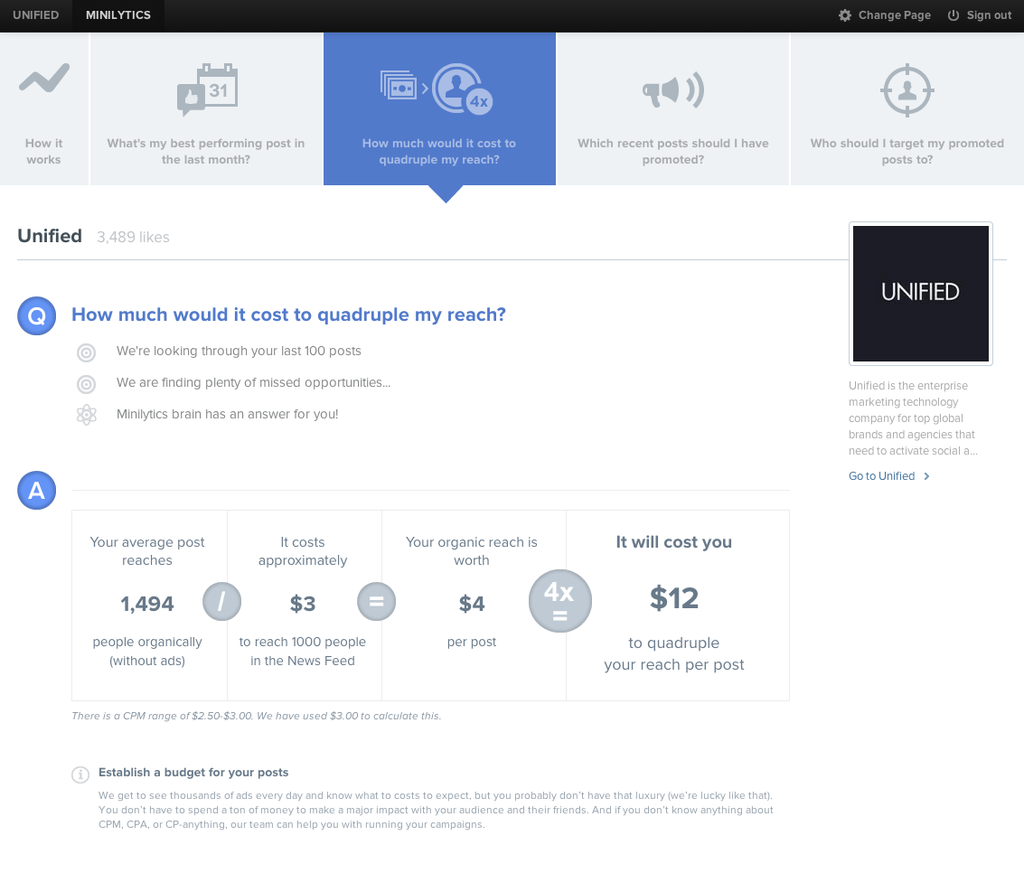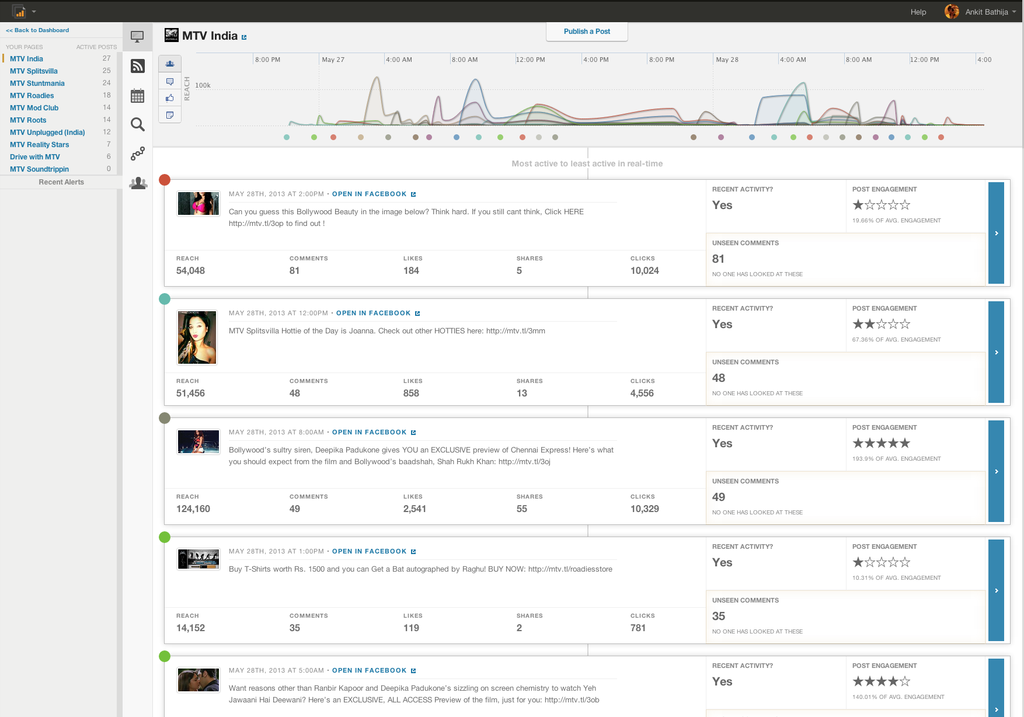Scaling Facebook Analytics Infrastructure with MongoDB & node.js

Matt Insler, West Coast Director of Engineering, Unified Social
mattinsler.com
github.com/mattinsler
www.unifiedsocial.com
Street Cred:
Defense - I could tell you, but then I'd have to...
Banking - MongoDB version 0.4?
PageLever - First engineering hire
Unified - Head of West Coast DevMongo & node in production:
Analytics Minilytics Now
Facebook Analytics Data
(what we're working with)
- Page-level data published once a day at 2 AM PT, and varies between 2-7 days behind current date
- Post-level data published every 10-15 minutes
- Polling is the only option
- API limits are roughly 600 calls per 600 seconds per API token
Our first take, circa 2011:
- Monolithic Rails App
- MongoDB 1.8 on MongoHQ cloud
- queue_classic for jobs
- TONS of workers to pull down Page data
- 1 worker per page at a time
- ~1,000 Pages per hour
First Take - Problems:
- Little visibility into errors or problems (our fault)
- Just ~1000 Pages per hour (Ruby's fault)
- Data structure: KISS principal
- Dots in keys (our fault)
{
fb_page_id: '...',
metric: 'page_fans',
period: 'lifetime',
data: {
'2013-01-01': 0,
'2013-01-02': 3,
...
}
}But it got the job done.
Then we started building new apps:

The Big Kahuna:

Requirements:
- Collect, store and update data in "real-time", despite the lack of a true real-time API
- Lots of data & lots of calls (posts, likes, comments, shares)
- Run custom logic for derived metrics
Thousands of Facebook Pages
x
Dozens of API requests per Page
x
Every 10-15 minutes
x
24/7
=
HARD.
Time for BIG changes:
- New sync system in node.js, complete rewrite
- New durable queuing system (home grown)
- Queue introspection
- Error Visibility
- Operation Statistics
- Retry to deal with 10-15% error rate from Facebook
- Heroku auto-scaling (homegrown)
- Write / Upsert-only methodology
Wins
- Loads of concurrency
-
1,000 Pages/hour => 1,000 Pages/minute
- Less servers, less $$
- 4k+ writes/sec to Mongo
Oh shit, mongo
-
Single documents for time-series data
- Documents grow and reallocate leaving huge holes in memory (oops, compaction issues in SQL vs Mongo)
-
Global write lock (CPU-bound)
-
Write queue length > 50 on average (up to 600 at times)
-
Not a ton of room to take on more data/concurrency
Fixing mongo (thanks MongoHQ)
- Time-series data laid out as single documents
- Moved to bare-metal boxes
- Sharded 8 DBs on 2 boxes (8x write throughput)
- 4 master/4 slave per box
- Moved to SSDs (10x write throughput)
Lesson
-
You can scale up for less than scaling out
-
Sharding on a single box can fix write throughput
-
Sharding makes backups difficult to deal with
Oh shit, node
- I/O Concurrency is different than concurrency
- CPU intensive tasks are still blocking
- RAM limitations on your hosting environment
- Just because you have 10MB of JSON, doesn't mean it's not 100MB parsed
- Log and catch errors everywhere
- Beware of DB server connection issues
My friend node
-
Make small jobs that mainly do I/O
- Limit work done per worker to fit in RAM
- Auto-scale to do more work when necessary
- Child processes catching 'uncaughtException' and logging
- Monitor DB connection errors and restart automatically
So much more
- Customer base is expanding
- Data collected is expanding
- So many social networks, so little time
Have ideas?
Want to help?
Unified Social
www.unifiedsocial.com
careers@unifiedsocial.com
Matt Insler
mattinsler.com
github.com/mattinsler
matt@unifiedsocial.com
Scaling Facebook Analytics Infrastructure with MongoDB and Node.js
By Matt Insler
Scaling Facebook Analytics Infrastructure with MongoDB and Node.js
At Unified Social we make millions of Facebook API requests per day to give our customers a "real-time" view into their Facebook Page and Post analytics. In this talk, I will walk through the scaling issues that we faced and explain how we adapted our data architecture, tech stack, and methodology.
- 8,132


